2.Psychological Background
This
chapter will examine
the psychological aspects of the project. It will look at the techniques employed
by the team in the interviewing of children, and how some of these could be
adapted for a computer-based system.
Assessment of pain in children is a difficult task. This
is due to the limited ability of the child to report the pain, and the personal
nature of the pain itself, yet the accurate assessment of pain may be critical
in order to be able to respond appropriately. The difference between measurement,
and assessment of pain is not always well defined but one definition is
that measurement involves "the application of some metric to a specific element,
usually intensity of pain" [McGrath & Unruh, 1987], whereas assessment is
"much broader, involving the measurement
of critical dimensions of pain (location, intensity and quality), and
also seeking to find the factors which precipitate, aggravate, or ease the pain,
what patterns the pain displays, and the factors which affect the way the pain
is perceived by the child" [Savedra & Tesler, 1989]. A number of tools
have been developed for the assessment of pain in children, and these are useful
for the description of various aspects of the dimension of pain. Some aspects
which have been studied are:
2.1.1 Location
Most
tools for recording location utilise a body
outline. Some have figures with hair and clothing, while others do not (such as
those represented on the McGill Pain Questionnaire [Melzack, 1975]). There is
no evidence that children have problems with either representation. A front and
a back view is presented, along
with an indication of the left and right sides (since some children have difficulty
visualising the left and right sides without assistance, and transposition
of left and right pain sites regularly occurs). The usual method of use of the
outline is to get the child to indicate the site of pain, usually with a marker
of some kind, although one strategy was to use a set of eight crayons, where
the colours of the crayons represented different amounts of pain [Eland], thus
attempting to provide details
of pain intensity, as well as location.
2.1.2 Intensity
The important factor in the use of these tools is in
the child understanding the gradation from "small" to "large", or "more" to "less".
The poker chip scale [Hester, 1979] defined a type of numerical scale, using
four poker chips, with one representing little hurt, and four representing the
most hurt possible. Children as young as four years old have been able to use
this tool effectively. McGrath's
verbal descriptions scale [McGrath & Unruh, 1987] is a list of six sentences
describing pain (from "0 - No pain", to "5 - Pain such that I can't do anything").
When using words in intensity scales it is important to consider the
vocabulary of the target subjects e.g. use of the word "Medium" rather than "Moderate"
with a young child. Beyer's "The Oucher" tool [Beyer, 1984] (see figure
2.1) has two parts: a numeric scale, and a set of corresponding happy-sad faces.
The faces may be used by children
who are too young to be able to count to 100. The tool was designed for children
between 3 and 12 years of age.

fig. 2.1 - Beyer's Oucher pain scale.
Happy-sad face scales (such as figure 2.2) are easy for children
to understand and have been used in several tools for the assessment of
pain, including assessment of the fear component of pain. The number of faces on
such a scale usually ranges from four to nine. Alternative graphic scales include
a pain ladder [Jeans &
Johnston, 1985] (figure 2.3) and a pain thermometer [Molsberry, 1979]. In one
study involving the use of five different scales (a colour scale, a visual analogue
scale, a word graphic rating scale, and a magnitude estimation scale) [Savedra
& Tesler, 1989], all scales were usable by children and adolescents. The
favourite with hospitalised children was a word-graphic one (figure 2.4), though
the colour scale was "best liked" and thought "easiest to use" by the majority
of non-hospitalised children.
A word-graphic scale may be used in two main ways - the subject may be asked
to mark the line in an appropriate place using the words as a guide to the value
associated with positions on the line (a continuous value since the result
takes the form of the distance from the start of the line to the point marked),
or they may be asked to select the appropriate word or phrase (a discrete value,
the number of the response selected).
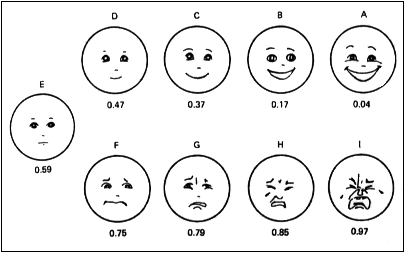
fig. 2.2 - Happy-sad nine face scale.
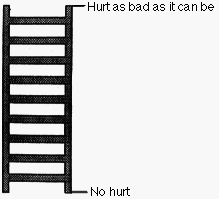
fig. 2.3 - Pain ladder [Jeans & Johnston, 1985].

fig. 2.4 - word graphic scale, sometimes called an adjectival scale, and may not
include the analogue component.

fig. 2.5 A visual analogue scale.
The visual analogue scale (such as figure 2.5) is used extensively in research and clinical practice,
though some research [Savedra & Tesler, 1989], has shown that it is not
very popular with children and adolescents. It also has the problem that care
must be taken when reproducing
the scale, since photocopying may result in changes to the length of the line
on the scale. The subject usually indicates their level of pain or discomfort
by placing a mark on the horizontal line. The data is usually collected by measuring
the position of the mark on the scale using a ruler.
2.1.3 Quality
This can be assessed by listening to
the words used by the child when they describe their pain. One problem with this
technique is the limited vocabulary
of younger children. The McGill Pain Questionnaire [Melzack, 1975], includes
words describing sensory qualities in terms of temporal, spatial, pressure,
thermal and other properties of the pain experience. Word lists such as this
may help children with limited vocabularies, and those who are less articulate,
who recognise the word, rather than use it. It can be useful to allow the child
to provide their own word, or to be able to write about it.
2.1.4 Timing
A number of questionnaires attempt to discover how the child
views their history of pain, how a pain has changed over a period of time,
and whether the pain has a periodicity associated with it. Questions may be asked,
such as "Is your current pain constant, or does it appear to come and go?",
"How many hours a day do you have pain now?", "How long does a single pain last
(minutes, hours)?" [Savedra & Tesler, 1989]. One technique involves the
use of word-lists, and another
asks the child to draw the pattern of their pain. Children who are not highly verbal
have been encouraged to relate the temporal aspect of their pain to sounds
from simple musical instruments [Ross & Ross, 1988]. For example the child
could be asked "Does your earache go on and on like this and never stop (long
unbroken whistle note), or does it stop and start like this (rhythmic beat on
drum)?"
The Bene Anthony test (also known as the Family Relations Test)
is used by psychologists who work with children to explore their emotional
attitudes towards their family. It consists of a set of boxes each with a slot
at the top, and on the front of which is a picture, which represents a member
of the family. A number of cards contain statements which detail positive and negative
attitudes towards family members. The child is presented with the cards
in turn, and places them in the
slot of the appropriate family member. When the cards have all been dealt with
it is possible to sum up the cards for each person and to make a graph comprising
four areas (figure 2.6). Any scores which vary from the expected set can be
seen at a glance.
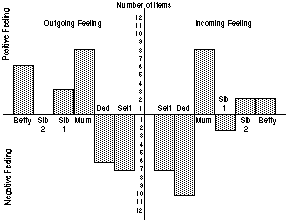
fig. 2.6 - Bene Anthony Family Relations Test graph
(only a subset of data plotted for clarity).
The questions attempt to
ascertain how the child believes that others in the family feel about them -
this is the "incoming feeling"
section to the graph, as well as how the child feels about the other members of
the family ("outgoing feeling"). Both of these may have positive and negative
valence.
The interviewing of
children under any circumstances is an activity that requires skilled interviewers.
Interviews often rely on the use of play materials to break down barriers
between interviewer and child.
Interviewing is especially difficult in cases where sexual abuse is suspected.
There is no definitive method of interviewing, although the establishment of a
good rapport between interviewer and interviewee is accepted as paramount. The
different methods used by professionals are well documented [Vizard, 1991], and
thus provide guidelines and advice for interviewers generally. Disagreement, however,
exists over the validity of certain methods with respect to discovering
whether children have been abused,
with some professionals believing particular techniques to be harmful or misleading.
All child sexual-abuse (CSA) interviews, however, are shaped by the
demands of the professionals who carry them out, and the use to which the results
are to be put.
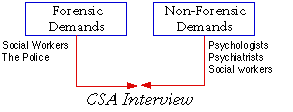
figure 2.7 - Child Sexual Abuse Interview and the
forces that shape it.
Because the child sexual abuse interview may be presented
as evidence in child protection and/or criminal proceedings, forensic demands
are added to those pertaining
in interviews conducted by professionals for other purposes. The Child interview
is usually conducted by one of the two groups of people shown in figure
2.7. Social workers and the police are usually skilled in carrying out forensic
interviews, but they are usually not skilled in interviewing children, especially
ones who have been involved in sexual abuse, or where abuse is suspected although
the child has made no allegations of abuse. Forensic demands are typified
by the Home Office memorandum
of good practice [Home Office, 1992], which gives guidelines for those who wish
to interview children, with a view to using video of the interview as evidence
in court.
Psychologists and psychiatrists often have highly developed
skills in interviewing children, but may be unable to conduct the interview in
a manner which a court would accept as providing evidence. An interviewer would
need to be skilled in both clinical and forensic methods as it is only through
a mix of the two approaches that
a suitable interview can be carried out. In the recent suspected child-abuse
case in Orkney [Clyde, 1992], a number of comments about the interviewing were
made during the subsequent inquiry (see appendix I for a list of comments). The
ones of note for this thesis describe the difficulties in finding suitably skilled
interviewers, and the lack of adequate recording of the interviews.
115.There was some deficiency in the experience and skill of the RSSPCC interviewers,
inadequate control of
their practice and no clear system for supervision and support.
116. The
police interviewers were inadequately trained and lacked adequate supervision.
123.Inadequate written records were made of the interviews and inadequate
attention paid to the recording of details of the creation of the drawings.
125.An approach to the interviewing was adopted by the RSSPCC and allowed
by the Orkney Social Work Department which was inappropriate for investigative
work
Similar findings
emerged from the enquiry into the Cleveland suspected child-abuse case [Butler-Sloss,
1988]:
There is a need for inter-agency training and recognition
of the role of other disciplines. For example police officers and social workers
designated to interview children should have joint training in their approach
to this task.
Police training needs to be developed well beyond the
acquisition of knowledge in respect of the criminal offences involved.
The
medical profession needs to
appreciate the legal implications of and their responsibility for the evidential
requirements of their work.
There are a number of different interview techniques, and each has its proponents and opponents.
Techniques for interviewing children vary from structured formats - the
"cookery book" approach (e.g. Statement Validity Analysis - section 2.4.1) via
fairly structured formats that
offer lists of topics for discussion (e.g. Glaser and Frosh - section 2.4.2)
to much less structured formats. We will now examine these two examples of interview
methods, and thirdly look at the system used by the team at Liverpool (section
2.4.3).
2.4.1 Statement Validity Analysis
The SVA approach grew out of collaboration
between German, Canadian and American researchers. The system utilises a court-appointed
expert who interviews
suspected child victims, evaluates all the other evidence in the case, and then
presents to the court an appraisal of the truthfulness of the child.
The
technique has two major components:
i) An interview, which consists
of the following stages:
- A rapport building stage where events which
are not directly connected to the case are discussed. This gives an insight into
the linguistic and cognitive abilities of the child.
- Free recall, in which the events of concern
are discussed. Questions are non-leading and open-ended.
- Specific questions which follow up points raised in the free recall stage.
- Leading questions about facts which are peripheral to the case, which are used to determine
the child's susceptibility to suggestion.
ii) The second component is a procedure to evaluate the credibility of the child's statement. This is
not a test of the credibility of the child - an honest child can give a false statement
and vice versa. It is
an attempt to assign a level of certainty to the statement made by the child. Yuille
describes nineteen SVA criteria which are used to evaluate the child's statement
[Yuille, 1988]. The presence of a criterion enhances the credibility of
the child's statement, though its absence will not decrease the credibility.
2.4.2 Glaser and Frosh
The
approach taken by Glaser and Frosh is less rigid than the statement validity
analysis method, but it is not
completely unstructured. A list of relevant issues are raised during the interview
with the child. The timing of the introduction of these issues depends upon
the child's psychological position at various points in the interview. Spontaneous
communications with the child are encouraged, and an attempt is made to lead
them from subjects which they feel able to talk about, to an account of possible
abuse [Glaser & Frosh, 1988].
2.4.3 Single Case Methodology
A third approach is the technique favoured by the team at Liverpool. They
chose to use an interview technique relying on single case methodology [Roberts
& Glasgow, 1993]. Behavioural science tells us that group research is not
always specifically applicable to the individual, and in the area of child sexual
abuse the variability of the experiences, abilities, emotional status and
behaviour of the group of children who have been subject to abuse is high. High
variability leads to problems
in the investigation and interpretation of behaviour, and single case methodology
is suited to situations where the results are specifically applicable only to
the individual. This single case methodology utilises a number of "blocks" or
"phases" during which data is gathered. Some designs specify two phases, and in
more powerful designs there are three. The first phase should attempt to ascertain
baseline data for the behaviour of the subject (traditionally called the
"A phase"); the second (the "B phase")
adds an extra procedure, the effect of which can be seen by collecting
similar data as the initial phase, and then referencing this data to that gathered
in the initial phase. In those designs where there are three phases, the third
phase is usually a return to the baseline (figure 2.8). It can be seen then,
that the single case methodology is not a nomothetic
approach, i.e. it does not produce data which is referenced to the norms
of a particular population (see
figure 2.9). On the contrary, this single case methodology is idiographic,
with respect to the individual being interviewed, and does not require
reference to a "normal response" for its results, although strictly there is
a level at which there is a reference to other data, since without
that there would be no way of determining what was meant by the data gathered.

fig. 2.8 Single-case methodology - individual response compared
internally.
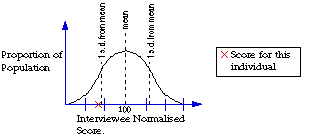
fig. 2.9 Nomothetic methodology - individual score compared with those of
the general population.
We will now examine the approach favoured by the Liverpool interview
team.
The SAGE approach is a single case methodology technique, which employs
four distinct but interlocking domains of investigation:
- Care settings - an investigation of places - where the child lives, where
they used to live, and places that they visit.
- People - the individuals who populate the various care settings.
- Somatic experiences
- the child is asked to name the various parts of the body
and then for each part, the functions associated with it, and then whether they
have had pain or discomfort in that area.
- Activities
- the sorts of things the child does in the various care settings.
While not intended to be equivalent
in nature or status, these domains constitute elements of a child's experience
that can form different stages of the interview. Each of the domains is covered,
using A and B phases as appropriate (see figure 2.10).
In the first A phase, the four domains are discussed in order to
- Build rapport between
child and interviewer.
- Rehearse the interviewer's technique.
- Establish the baselines of the verbal and non-verbal communication skills and
emotional presentation of the
child.
- Produce material which will assist in identifying places and people.
- Test the validity of the child's statements against information about
the child's "universe" which was collected in advance.
Phase B then continues by
- Gathering information using techniques introduced in phase A.
- Controlled activation of any sanctions against communication
(SAC) which the child may have.
- Exploring uncharacteristic emotional responses and verbal/non-verbal communications
from the child.
- Being aware that if the child demonstrates a SAC then the interviewer can redirect the interview
to discover the origin of the SAC.
Finally, phase A is reinstated. This time the intention is to
- Determine whether the pattern established by the transition from phase A to phase B
arose from the interview processes themselves, or from other experiences, including
abuse.
- Confirm events and identities with the child.
- Reassess the reliability and validity of
the child's statements.
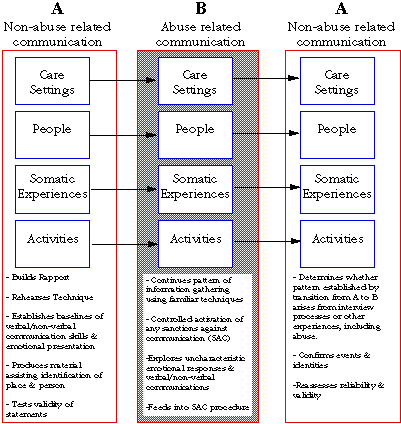
fig. 2.10 - how the SAGE interview works.
The interviewer needs to gather information on the child before the interview
takes place, in order that they may introduce as nearly as possible the known
"universe" of the child into the interview, so that they are in a position to anticipate
what the child is likely to describe in each domain. This requires an
amount of investigative work on behalf of the interviewer; usually about an hour
if someone who is suitably acquainted
with the child's "universe" is available. Then the initial stages of
the interview involve assisting the child to produce representations of all of
the care settings, and the individuals associated with those settings. This, in
part, tests the thoroughness of the work done by the interviewer in gathering
information on the child's universe before the interview began, and also allows
the interviewer to compare the answers of the child to reality, and give feedback
as appropriate. One of the
key features of this system is that the rapport building stage is actually part
of the first phase of the interviewing, and not a separate and data-free phase
as it usually is with alternative forms of interviewing.
The key to the
interview is locating and investigating sanctions against communication (SAC),
i.e. the perception that the child does not wish to talk about something. It
is hypothesised that this is often associated with situations in which a child
has been told not to talk about
something, or to keep something secret. On the other hand it is also possible
that a child has decided on its own to keep quiet about something believing this
to be the best course of action; for example parental conflict or separation.
A computer program that would be suitable for assisting in the interviewing of
children would attempt to model good practice, and help to provide a bridge between
the needs of the clinical
experts and those of the forensic experts. It would need to have a standard form,
the same for every interview. It must produce auditable results so that the
output from the program could be reproduced as evidence that the child used the
program in a certain way. Also, because the program would not directly ask questions
about abuse, it could be used with any population, including non-complainant
children. The program would utilise high-quality graphics in order to capture
and maintain the child's interest,
and would utilise a friendly and easy-to-use interface. Multimedia in the
form of animation, video and sound would be used where this was appropriate
to further lower the potential barriers to communication.
The SAGE interview,
developed at Liverpool by Roberts and Glasgow [Roberts & Glasgow, 1993],
is based on a single-case methodology approach, and it is this technique that
the team at Liverpool hoped to be able to adapt for a computer-assisted interview
system. The production of
the computer-based system had an effect on the SAGE non-computer-based approach,
which underwent refinements as various aspects of the original techniques had
to be clearly specified. The aim of the project became the adaptation of, and
enhancement to, the original SAGE approach to produce a methodology which could
be both supported and extended by the use of the appropriate computer-based
techniques. The resulting computer program took some of the techniques used by
the team at Liverpool as the basic
ideas for its modules, but a large part of the project became the realisation
of functional, user-friendly interfaces for the various information-gathering
modules. The development of these interfaces will be explored in detail in chapter
4.
back to Chapter 1. forward to Chapter 3










